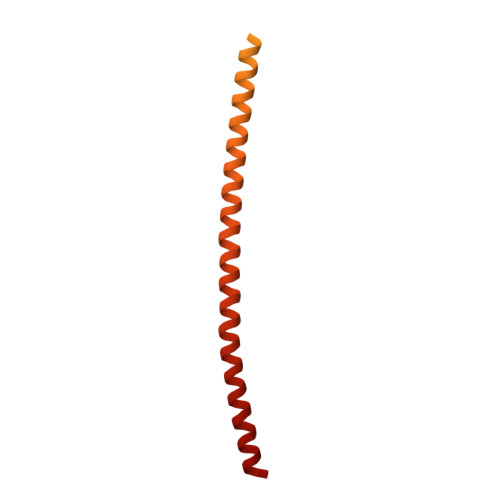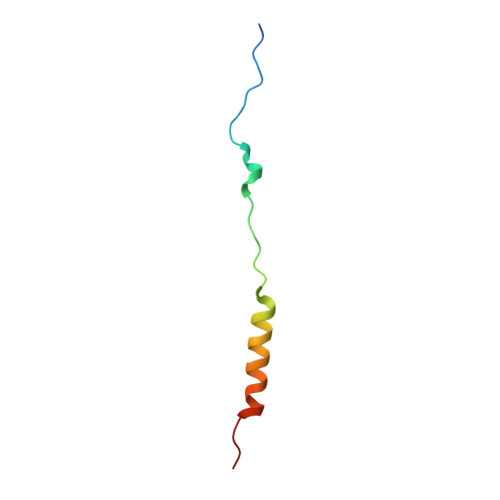Structure-based design of a SARS-CoV-2 Omicron-specific inhibitor.
Yang, K., Wang, C., Kreutzberger, A.J.B., White, K.I., Pfuetzner, R.A., Esquivies, L., Kirchhausen, T., Brunger, A.T.(2023) Proc Natl Acad Sci U S A 120: e2300360120-e2300360120
- PubMed: 36940324
- DOI: https://doi.org/10.1073/pnas.2300360120
- Primary Citation of Related Structures:
7TIK, 8FA1, 8FA2 - PubMed Abstract:
The Omicron variant of severe acute respiratory syndrome coronavirus 2 (SARS-CoV-2) introduced a relatively large number of mutations, including three mutations in the highly conserved heptad repeat 1 (HR1) region of the spike glycoprotein (S) critical for its membrane fusion activity. We show that one of these mutations, N969K induces a substantial displacement in the structure of the heptad repeat 2 (HR2) backbone in the HR1HR2 postfusion bundle. Due to this mutation, fusion-entry peptide inhibitors based on the Wuhan strain sequence are less efficacious. Here, we report an Omicron-specific peptide inhibitor designed based on the structure of the Omicron HR1HR2 postfusion bundle. Specifically, we inserted an additional residue in HR2 near the Omicron HR1 K969 residue to better accommodate the N969K mutation and relieve the distortion in the structure of the HR1HR2 postfusion bundle it introduced. The designed inhibitor recovers the loss of inhibition activity of the original longHR2_42 peptide with the Wuhan strain sequence against the Omicron variant in both a cell-cell fusion assay and a vesicular stomatitis virus (VSV)-SARS-CoV-2 chimera infection assay, suggesting that a similar approach could be used to combat future variants. From a mechanistic perspective, our work suggests the interactions in the extended region of HR2 may mediate the initial landing of HR2 onto HR1 during the transition of the S protein from the prehairpin intermediate to the postfusion state.
Organizational Affiliation:
HHMI, Stanford University, Stanford, CA 94305.















